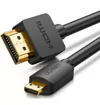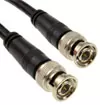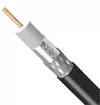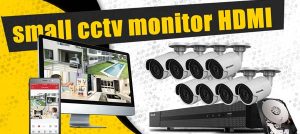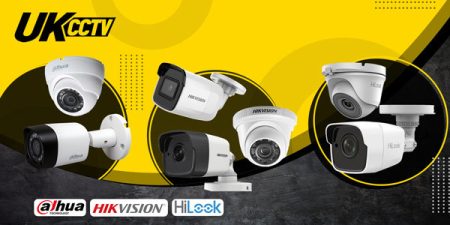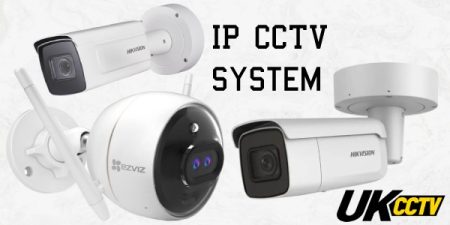Remote powering is also ideal for composite-style coaxial cables with additional power cores. We will offer a wide range of composite coaxial cables with power from stock, including RG59, with different power core sizes depending on the required cable length. The demand for HD cameras is also increasing in the industry, and there seems to be a clear focus on quality CCTV coaxial cable with power products rather than structured cables.
Power cords and cables are an essential part of installing a security camera. Accessibility to electrical outlets and Ethernet connections can affect how you configure your system and even the sort of system you choose for your property. This section describes power supplies for different types of security cameras.
Surveillance Cameras And CCTV Coaxial Cable With Power
Internet Protocol (IP) cameras powered by Ethernet cables and HD-over-Coax cameras powered by DC cables. This section describes camera power options. It lets you decide the type of security camera setup best suits your needs.
IP security cameras use Power over Ethernet (POE) to deliver power over the same wire as the video. Power over Ethernet simplifies IP camera installation compared to older analogue systems that require an additional power cable for each camera. So, if you’re deciding how to power your security camera, you know you can power your IP camera via Power over Ethernet.
Non-IP Or HD Over Coax Security Cameras
A power adapter is available for non-IP security systems. HD over coax cameras have long been the industry standard. HD over coax and analogue security cameras use a CCTV coaxial cable with power to transmit HD video from the camera to the DVR and use AC power. It would help if you used a separate power cord to supply power.
It uses standard RG59 coaxial cable to send signals through walls over long distances. You must run a power cable to each unit for each security camera in your surveillance system. It is inconvenient when multiple cameras are installed, and a large area needs to monitor.
How To Connect CCTV Coaxial Cable With Power To CCTV Camera
Coaxial cables that carry most analogue CCTV video can reuse when migrating to IP cameras. The technology for doing this, commonly called Ethernet over Coax (or EOC), is mature and available from various vendors.
Reusing existing cables has many advantages. The cost savings over pulling a new line are mentioned. However, for niche scenarios, it has many other benefits.
No Wiring Costs
Since the cables are already in place, there are no additional costs to run new wires or install new conduits, cable brackets or cable trays. Many end users and coders frown upon leaving unused cables in place, so there is no need to remove existing cables.
Faster Installation And Deployment
Replace your analogue cameras with IP cameras and get online in less time than pulling a new Cat 5e/6 cable.
Minimal Impact On End-User Experience
No service interruptions from plumbers, ladders, open ceilings, or cable spool boxes. No potential damage to your facility and minimal job site cleanup.
Extension Cable Length
Ethernet over UTP cable is typically limited to distances of 100 meters without extenders for IP data transmission. Converters allow existing coaxial cables to carry IP video over 300 meters of cable.
Camera Performance
A CCTV coaxial cable with power with a converter can also send POE power to an IP camera without needing a separate power source at the camera location.
Installing A Coaxial Converter Is Very Easy
On the camera side, a small form factor media converter is mounted either on the camera body or in an adjacent junction box, if space permits. Another small form factor or rack-mount converter unit with power supplies install at the network switch site. Connect an existing coaxial cable to one end of the converter and a UTP patch cable to connect the other end to your camera or network switch. Many current-generation EOC converters transmit his POE power in addition to data over coaxial cable, eliminating the need for a power supply on the camera side.
Type Of CCTV Coaxial Cable With Power
Three types of CCTV coaxial cable with power are RG59, RG6, and RG11. The RG6 is the most widely used coaxial cable, but RG11 and lower RG59 are also helpful for specific connections. Here are the basics for each type:
RG59 is the lower end of the coaxial cable options. Can use it for simple TV antenna connections and closed-circuit TV connections with short cable runs. It lacks the insulation to be a practical coaxial cable for satellite cable connections or longer runs. However, they are thinner and bend more easily, making them ideal for fast connections in tight spaces. RG6 cables have better insulation and less signal loss over longer distances. It is ideal for satellite and cable TV, and its conductivity makes RG6 a good choice for HDTV.
RG11 carries the perfect signal for HDTV, but it’s also the thickest coax cable. It makes it difficult to bend, requires special connectors, and is challenging to install. For this reason, RG11 use to bridge very long distances. B. From curb to home for cable TV connection. It is also suitable for burials due to its more robust construction.
Considerations When Choosing The CCTV Coaxial Cable With Power
There are many essential options when purchasing coaxial cable, including how the cable connects to your TV, cable construction, and operating frequency.
BNC connectors (Neill-Counselman bayonet) easily connect or disconnect to televisions, test equipment and radios. Usually used for short cables. Best connector for RG59 cable.
F-Type connectors are the most common. Use RG6 and RG11 cables to connect cable, satellite and digital TV. There are two types: Twist and crimp. Twist-on connectors do not provide as good a connection quality as crimp style.
Center Conductor
Pure copper, copper-plated steel in the middle of the cable acts as a conductor that carries the signal from the source to the television. Solid copper wire offers the best conductivity but is stiff and difficult to use. Copper-coated steel doesn’t hold the signal either, but it’s more flexible and easier to use.
CCTV Coaxial Cable With Power Insulation
The conductor surrounds by a foil screen and copper strands that act as an insulator. These materials are essential to the cable as they block electromagnetic interference and radio waves that cause signal loss. The better the shield, the longer you can run the line without signal loss.
PVC Jacket
The final layer of the coaxial cable is his PVC jacket, which protects the cable from water and dirt, allowing it to use outdoors.
Operating Frequency And Transmission
Coaxial cables on the UKCCTV website, are designed to have running frequencies that decrease sign loss. The better the sign frequency, the shorter its wavelength and the more likely it’s far to leak via the cable shield. Most coaxial cables operate between 600 and 2,000 megahertz (MHz). High-quality R6 and R11 cables with thick insulation run around 600MHz and low-quality R59 cables with thin insulation use around 2000MHz. R6 and R11 cables work better over long distances than R59 cables.
How useful was this post?
Click on a star to rate it!
Average rating 0 / 5. Vote count: 0
No votes so far! Be the first to rate this post.



















